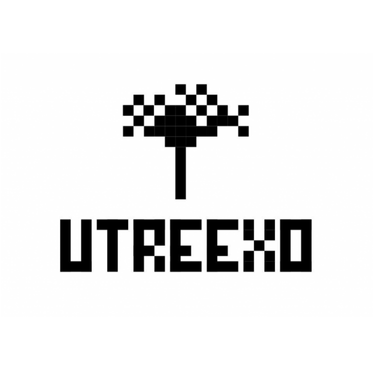
Utreexo demo release 0.2
The goal of Utreexo is to make running a full node easier, faster, and smaller, and while that’s more of an asymptote than a point on any curve, we’re getting there. Today we’ve released Utreexo demonstration 0.2, which pairs the Utreexo accumulator with a modified version of btcd(temporarily called utcd). Most of the utcd work was done by Calvin Kim, as Niklas Gögge and myself have been working on improving the accumulator and how it interacts with the bitcoin data structures. Calvin has written a post about the work as well.
This new release works more like a normal bitcoin node: it starts up, finds peers, and verifies the blockchain. There are still things it doesn’t have, like a mempool, or a way to deal with reorgs. (It currently deals with reorgs by crashing.)

Calvin Kim is awarded for his role as an Utreexo Collaborator: "BitMex awards its last developer grant to a Bitcoin scalability solution from MIT"
BitMex's 100x Group has awarded its last Bitcoin development grant of the year. The company has awarded a grant valued at $40,000 to Calvin Kim for his Bitcoin scalability solution, Utreexo — a project originally created by Tadge Dryja from the MIT Digital Currency Initiative.

"MIT Lightning Creator Unveils First ‘Demonstration’ of Bitcoin Scaling Tech" by Coindesk discussing Utreexo
An article by Alyssa Hertig published on July 28th, 2020. coindesk.com
“The infrastructure propping up Bitcoin might become easier for anyone to spin up and run.
Lightning creator Tadge Dryja has been working on a new design for a lighter weight Bitcoin full node, about which he first wrote a paper in 2019. Last week, he and a team of coders released a first version of the Utreexo software as a part of MIT Digital Currency Initiative (DCI), putting the idea of lighter nodes into working code.

Utreexo's First Demonstration
DCI Research Scientist Tadge Dryja released the Utreexo Demonstration today through a Medium post.
“I’m excited to announce the release of the first demonstration of Utreexo. Utreexo is a new scalability technology for Bitcoin, which can make Bitcoin nodes smaller and faster while keeping the same security and privacy as full nodes.”

DCI Team Members Presented at the Crypto Economic Security Conference: Unitize Online Event July 6-10th, 2020
Many DCI Team members presented at the Crypto Economics Security Conference: Unitize Online Event July 6-10th, 2020.
View their presentations here

Podcast: DCI's Tadge Dryja was interviewed for 'WhatBitcoinDid' on Utreexo
In this interview, I talk with Tadge Dryja, a research scientist at MIT's Digital Currency Initiative and the co-author of the Lightning Network whitepaper. Tadge recently published a new whitepaper called Utreexo, a scaling proposal for Bitcoin aimed at minimising storage requirements needed to run the Bitcoin protocol.

Utreexo: A dynamic hash-based accumulator optimized for the Bitcoin UTXO set
by Thaddeus Dryja (MIT’s Digital Currency Initiative)
Abstract: In the Bitcoin consensus network, all nodes come to agreement on the set of Unspent Transaction Outputs (The “UTXO” set). The size of this shared state is a scalability constraint for the network, as the size of the set expands as more users join the system, increasing resource requirements of all nodes. Decoupling the network’s state size from the storage requirements of individual machines would reduce hardware requirements of validating nodes. We introduce a hash based accumulator to locally represent the UTXO set, which is logarithmic in the size of the full set. Nodes attach and propagate inclusion proofs to the inputs of transactions, which along with the accumulator state, give all the information needed to validate a transaction. While the size of the inclusion proofs results in an increase in network traffic, these proofs can be discarded after verification, and aggregation methods can reduce their size to a manageable level of overhead. In our simulations of downloading Bitcoin’s blockchain up to early 2019 with 500MB of RAM allocated for caching, the proofs only add approximately 25% to the amount otherwise downloaded.
Coindesk's 'This Scaling Tech Could Let You Sync Bitcoin Straight From Your Phone' using UTreeXO created by Tadge Dryja
“Maybe we don’t have to store everything ourselves.”
That’s Tadge Dryja, cryptocurrency research scientist at the MIT Digital Currency Initiative, explaining the concept behind his bitcoin scaling solution, “utreexo.”
Utreexo: A dynamic accumulator for Bitcoin state - A description of research by Thaddeus Dryja
One of the earliest-seen and most persistent problems with Bitcoin has been scalability. Bitcoin takes the idea of "be your own bank" quite literally, with every computer on the bitcoin network storing every account of every user who owns money in the system. In Bitcoin, this is stored as a collection of "Unspent transaction outputs", or "utxo"s, which are somewhat unintuitive, but provide privacy and efficiency benefits over the alternative "account" based model used in traditional finance.
